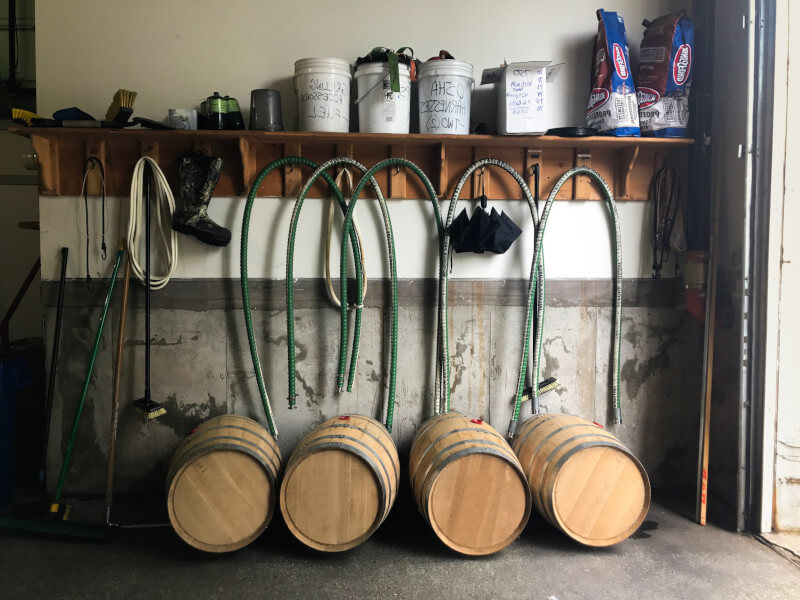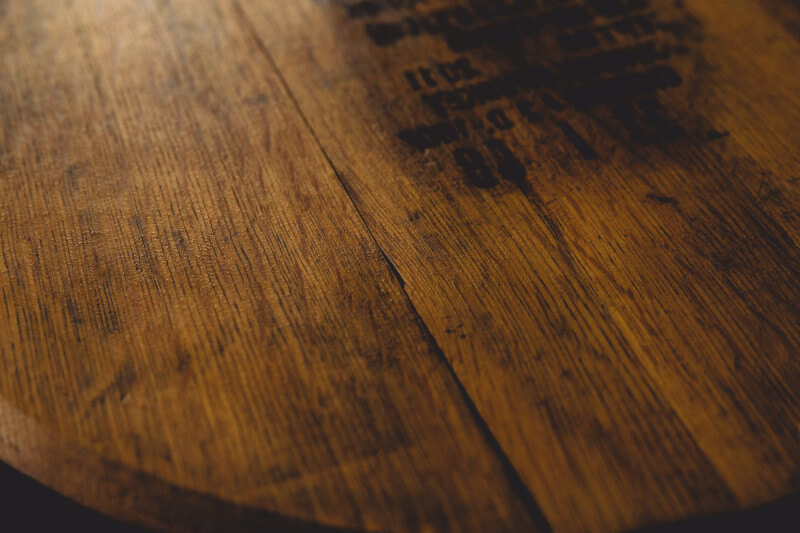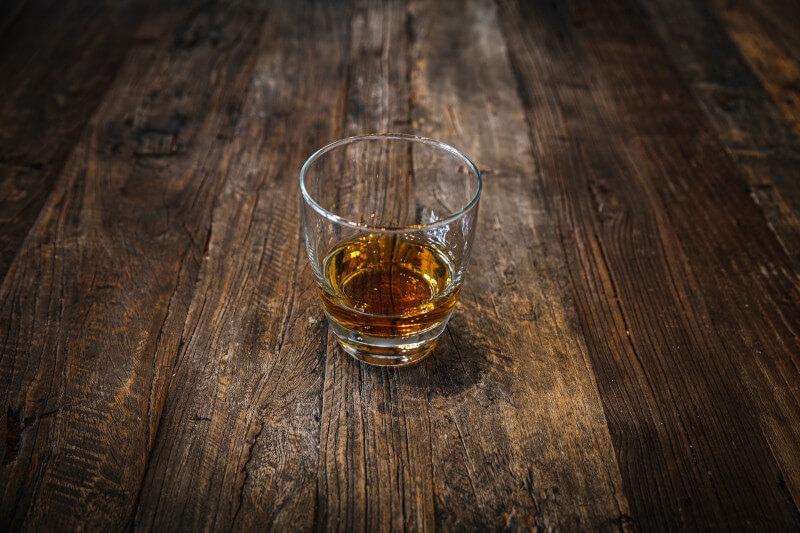Bourbon Ages Best in Oak Barrels
Bourbon can’t be aged properly without oak barrels, which also serve to color and flavor the spirit over time. The ultimate flavor can be affected by several factors, including the type of oak used, the length of time the barrel is charred, and the location where the barrel is stored.
The charred surface of a bourbon barrel is designed to react with the alcohol and release its signature flavors. The technique can be nuanced in different ways depending on the type of wood used. Let’s dissect the process of manufacturing a bourbon barrel and see how it impacts the flavor of one of the most beloved American beverages.
Bourbon, What is It?
American whiskey known as bourbon is fermented from corn and other grains. Maize is the primary component of bourbon, and the mash bill must consist of at least 51% maize to be considered authentic whiskey. Rye, wheat, and barley are among the other grains that can be utilized in the production of bourbon.
Two years of aging in new oak barrels are required for bourbon to be considered “aged.” Barrel inside must be blackened, and the wood used must be American oak. The bourbon’s signature color and flavor come from the time spent in these barrels.
Authentic bourbon must also be bottled at 40% alcohol by volume (ABV). “Cask strength” whiskies often have an alcohol by volume (ABV) of 60% or above, and there are several such options available. In our Collaborations Series, we have various bourbons and whiskies that are of higher proof.
Why Do We Put Bourbon in Barrels?

The bourbon barrel is used for more than just storing the whiskey for at least two years while it matures. Whiskey is clear when it is poured into a barrel, but it turns a rich amber color and develops complex flavors as it ages. The barrel is responsible for imparting almost all of the whiskey’s flavor and color; the mash bill is responsible for the rest. In that case, why is the bourbon stored in a barrel? It transforms a practically neutral grain alcohol into a rich, amber whiskey.
The Construction of Bourbon Barrels
Any distillery that uses bourbon barrels must start the process at the cooperage and use only fresh barrels. The cooperage is where the American oak is delivered. It is required that every bourbon be matured in barrels made from American oak that has been chopped into staves.
The staves are assembled and secured with metal hoops, and then the barrel heads are crafted. The purpose of this is to ensure that the barrels are impenetrable to liquids but not to air. Because of the increased ventilation, more flavor may be taken in. The next step is to fill the barrel with water and let it sit for a few days. The next step is to char the inside of the barrel once it has been wet.
The barrel is charred by being exposed to fire for around 30 minutes. Charring is required for all whiskey and bourbon barrels, however, the amount of char is up to the individual producer. Whiskeys from various distilleries might taste very different because of the charring process.
The bourbon is poured into the barrel and sealed once it has cooled. The barrel will be left alone for at least two years, and often much longer, sometimes for decades. During this time, the bourbon will absorb the wood’s natural flavors, transforming it into something truly special.
What is the Process of Barrel Ageing?
The barrel seals to keep the alcohol within but allows air to escape. This makes the barrel vulnerable to variations in climate. Since wood has pores that can be filled by liquid, it is porous. This is why a wooden pole will retain water for longer than a metal one. The wood used to construct the barrels expands and contracts as the seasons change, altering the wood’s permeability.
As the wood expands and contracts, it draws and expels whiskey, transferring with it botanicals, flavor notes, and coloring agents from the charred wood. These enhancements smooth down the spirit’s original harshness while also adding the distinctive hue and complex vanilla, oak, and caramel notes for which bourbon is famous.
What Kinds of Trees Are Chosen for Whiskey Casks?

Not all whiskies are required to be aged in fresh, charred American oak barrels like bourbon is. Whiskies are produced all around the world using a wide variety of woods; at WhiskeyD, we even source a few that are finished in woods other than American oak.
Whiskey barrels are typically made from one of these types of wood:
American Oak
Whiskey-aged in American oak barrels has an intense vanilla and caramel flavor. The majority of whiskies, including bourbon and rye, are aged in American Oak barrels. Rye whiskey has a more robust flavor, and the American Oak tames that heat while adding complexity to the drink.
French Oak
Whiskey aged in French oak barrels often has hints of citrus and stone fruits. While American Oak is more commonly used in the whiskey industry, French Oak is occasionally used for a more expensive, premium whiskey. Scotch whiskey typically uses French Oak because it imparts a more nuanced flavor.
Asiatic Oak
Since Japanese Oak barrels have just recently been introduced to the whiskey industry, not much is known about them. The green tea and bamboo overtones that Japanese oak gives to whiskey make it stand out from the crowd. This Oak is extremely scarce and is reserved for limited editions and special releases.
Whiskey Oak
Scotch whiskey is aged in Sherry Oak barrels for its distinctively rich and fruity flavor. Sherry-seasoned Spanish oak is used to make barrels known as “Sherry Oak.”
Chestnut Barrels
Whiskey aged in chestnut barrels may have a flavor profile distinct from that of whiskey aged in other types of barrels. Whiskey aged in chestnut barrels often takes on a nutty flavor with hints of hazelnut and almond. Chestnut is a durable wood that can make for long-lasting barrels. Whiskies of a higher quality and rarity level are typically aged in chestnut barrels. I don’t understand the need for aging bourbon for so long.
Most bourbons are matured for four years or more, however, the minimum age for bourbon is two. The unique flavor and amber hue of bourbon are both results of its long aging process. A bourbon’s flavor and texture improve with time in the barrel.
Because of chemical reactions and other activities that take place during aging, bourbon needs to be stored for a long time. It takes roughly eight months of age for these reactions to become significant. In general, the price of whiskey increases with its age because the more time it has spent maturing, the better it will taste. Ultimately, the speed at which a whiskey can be aged depends on how much flavor can be extracted from the barrel and transferred to the whiskey in a shorter amount of time. Distillers have had a hard time finding ways to speed up the process.
The rate at which wood ages is dependent on both the amount of liquid present and the amount of exposed wood. That’s why whiskey may be aged more quickly in a smaller barrel. Naturally, more wood is needed for smaller barrels, which reduces the technique’s overall efficiency.
Lessons From the Bourbon Ageing Recipe

The barrel has a significant role in imparting aroma and flavor to the bourbon during the aging process. American Oak is required for aging Bourbon, however, French Oak, Japanese Oak, or Sherry Oak can be used for aging other types of whiskey. The whiskey’s flavor will vary depending on the type of Oak employed. A minimum of two years is required for aging bourbon, but most of it is matured for far longer than that. The unique flavor and amber hue of bourbon are both results of its long aging process.
It’s a bit of a paradox that bourbon aged in smaller barrels may develop high-quality flavor more quickly. While this does speed up the aging process, it also reduces the amount of bourbon that can be stored in each barrel. The size of the barrels used in a distillery is ultimately up to the proprietor.
